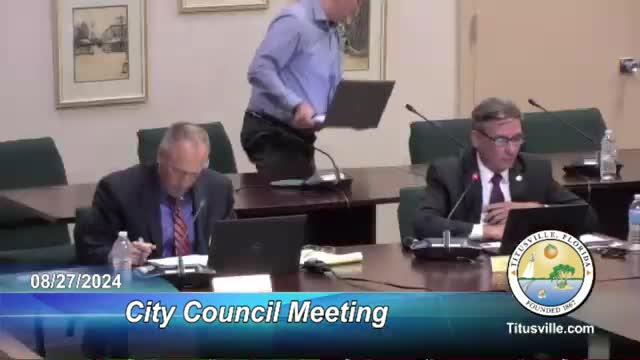City Council Debates Controversial Synthetic Turf Regulations
August 28, 2024 | Titusville, Brevard County, Florida
This article was created by AI summarizing key points discussed. AI makes mistakes, so for full details and context, please refer to the video of the full meeting. Please report any errors so we can fix them. Report an error »

During a recent city council meeting, discussions centered on the regulation of synthetic plants and artificial turf, following concerns raised in previous sessions regarding their location, appearance, and the absence of clear criteria. The council is considering a draft set of standards aimed at addressing these issues, as staff members seek direction on evaluating the use of synthetic materials in landscaping.
City staff presented a comprehensive set of standards sourced from another community, which outlines permissible locations for synthetic vegetation, minimum material specifications, and guidelines for installation, repair, and maintenance. The proposed standards suggest that synthetic turf could be allowed in side and rear yards but not in front yards, reflecting the council's desire to maintain aesthetic integrity while providing some flexibility for residents.
Council members expressed mixed feelings about the introduction of synthetic turf, with some acknowledging its low maintenance benefits, particularly for small lots or areas around pools. However, concerns were raised about the environmental impact of artificial turf, including its potential to increase surface temperatures and contribute to the heat island effect, as well as its implications for stormwater management.
Public comments highlighted strong opposition to synthetic turf, with residents citing environmental risks, including contamination of local aquifers and increased runoff. Experts from the University of Florida echoed these concerns, emphasizing the detrimental effects of petroleum-based materials on local ecosystems.
As the council deliberates on the proposed standards, they face the challenge of balancing residents' desires for low-maintenance landscaping options with the need to protect the environment and uphold community aesthetics. The council is expected to continue discussions and refine the proposed regulations in future meetings.
City staff presented a comprehensive set of standards sourced from another community, which outlines permissible locations for synthetic vegetation, minimum material specifications, and guidelines for installation, repair, and maintenance. The proposed standards suggest that synthetic turf could be allowed in side and rear yards but not in front yards, reflecting the council's desire to maintain aesthetic integrity while providing some flexibility for residents.
Council members expressed mixed feelings about the introduction of synthetic turf, with some acknowledging its low maintenance benefits, particularly for small lots or areas around pools. However, concerns were raised about the environmental impact of artificial turf, including its potential to increase surface temperatures and contribute to the heat island effect, as well as its implications for stormwater management.
Public comments highlighted strong opposition to synthetic turf, with residents citing environmental risks, including contamination of local aquifers and increased runoff. Experts from the University of Florida echoed these concerns, emphasizing the detrimental effects of petroleum-based materials on local ecosystems.
As the council deliberates on the proposed standards, they face the challenge of balancing residents' desires for low-maintenance landscaping options with the need to protect the environment and uphold community aesthetics. The council is expected to continue discussions and refine the proposed regulations in future meetings.
View full meeting
This article is based on a recent meeting—watch the full video and explore the complete transcript for deeper insights into the discussion.
View full meeting